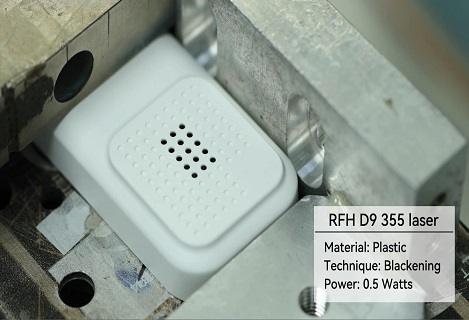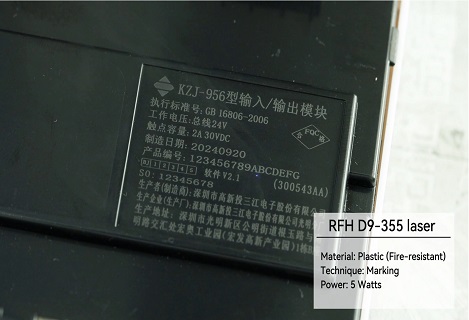
Why Microelectronics Processing Applications Benefit From RFH UV Lasers
Website: http://www.rfhtech.com
Whatsapp(Wechat): 18928466502
Email: export06@rfhlasertech.com
Ultraviolet lasers power a wide range of industrial manufacturing, especially in microelectronics and display manufacturing. This is because UV light has unique properties that enable micromachining and other structuring of parts with greater precision and less thermal damage.
RFH Nanosecond UV Lasers Are Microelectronics Machining Fighters
There are three reasons why UV lasers can do this. First, almost everything—plastics, organic materials, metals, and semiconductors—absorbs UV light strongly. Thus, the laser energy effectively treats the material, not just straight through it. This also makes UV lasers particularly good at processing composite and multilayer materials that are increasingly used in microelectronics and other industries.
Second, the high absorption also means that the UV laser does not penetrate deeply into the material, effectively reducing the size of the so-called "heat-affected zone." Areas surrounding laser-created features (cuts, holes, etc.) that may be damaged or altered by the laser.
Third, UV light can be focused better than longer wavelength visible or infrared (IR) light. This means that UV lasers can make smaller holes or narrower cuts.
Nanosecond laser hits 'sweet spot'
Nanosecond pulse width, diode-pumped, solid-state lasers are the most popular industrial UV light sources because they represent the "sweet spot" for most manufacturers. They are economically attractive (in dollars per watt), typically operate at relatively high pulse repetition rates, and also have fairly high output power. This provides cost-effective high-throughput production.
But manufacturers have been looking to further improve their processes and reduce costs. In the case of laser sources, this usually means higher output power, as this usually increases process throughput.
Describe the characteristics of RFH 355nm UV laser in the microelectronics processing industry
There is only one small problem with doing this with solid-state UV lasers. (Actually, there are many, but we're only talking about one here!) That's because solid-state lasers emit infrared (IR) light. Therefore, a third-harmonic generating (THG) crystal is used inside the laser to convert infrared light to ultraviolet light.
But, remember how well most materials absorb UV light? This means that it is difficult to avoid absorbing at least some laser energy in the THG crystal. And, because it's inside the laser, the THG crystal is exposed to a lot of UV light.
RFH Pulsed Nanosecond UV Laser
One solution to this problem is to build a mechanism in the laser that physically moves the THG crystal periodically. The idea is to keep changing the focus of the laser beam in the crystal before it fails catastrophically at any particular location.
This method works well. But obviously, it adds cost and complexity to the laser. Additionally, every time the crystal is moved to a new location, there are subtle changes in output power and other beam parameters that affect the process and therefore part quality.
Another approach is to ignore the problem entirely and keep the THG crystal at one point until the laser is gone. This makes the laser head cheaper, which is a good idea as long as you don't mind low laser reliability, poor output consistency, or short lifetime (<3000 hours).
uv laser | green laser | Ultraviolet lasers | uv dpss laser | nanosecond laser | UV laser source | Solid State Lasers







































